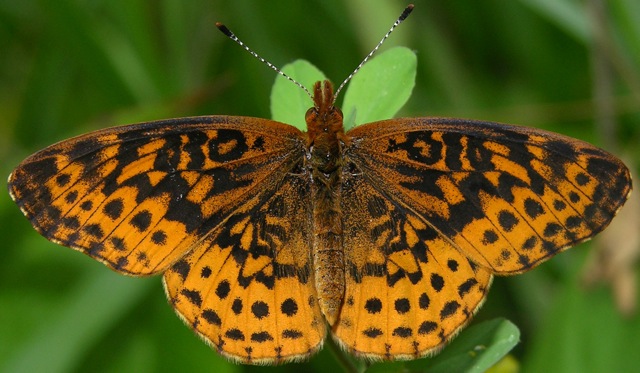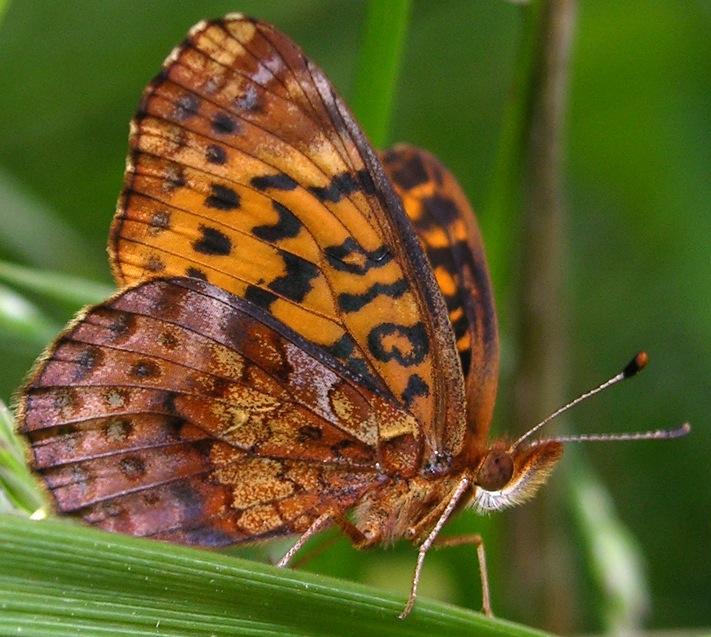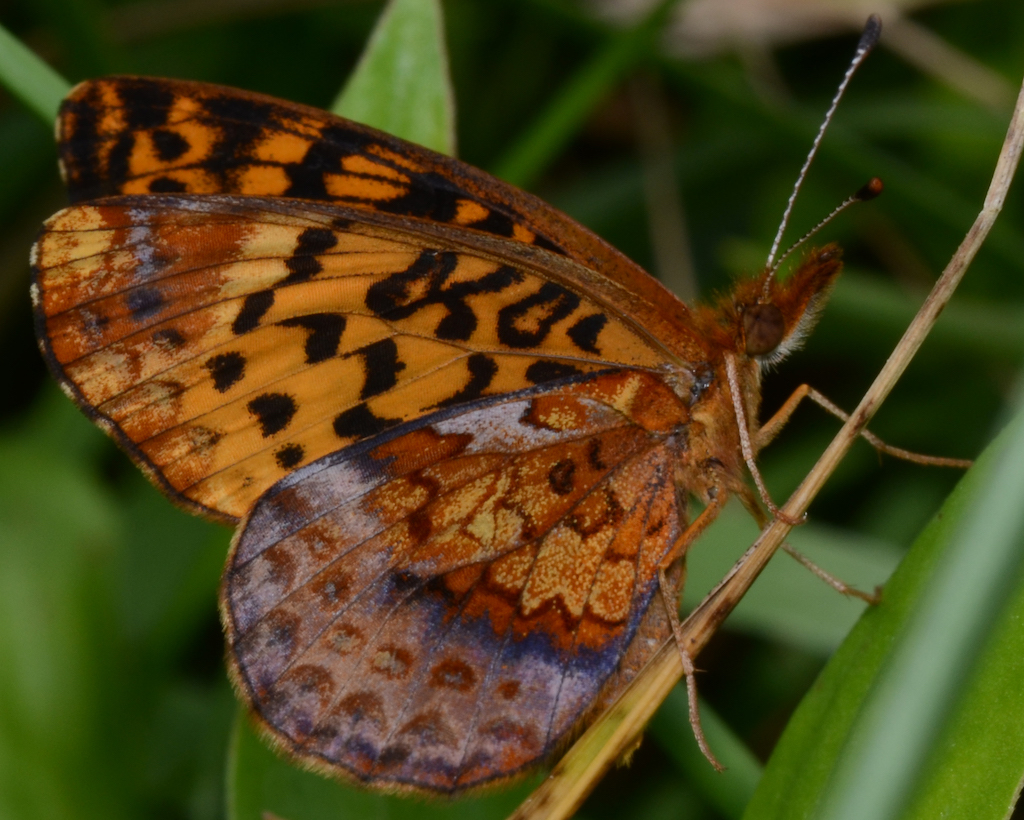|
| Common Name | Meadow Fritillary by Roger Rittmaster => Yancey Co., 2006-06-07
[View PDF]
 Click to enlarge Click to enlarge
[Google Images] GBIF [Global Distribution ] BoA [Images ] iNaturalist |
| Scientific Name | Boloria bellona
|
| Link to BAMONA species account. |
| Map | Click on a county for list of all database records for the species in that county.
 |
| Distribution | DISTRIBUTION: Throughout the Mountains, and scattered in the northwestern Piedmont. Apparently absent from the Piedmont foothills in the southwestern part of the province.
|
| Abundance | ABUNDANCE: Common to locally very common in the northern Mountains (north of Buncombe County), but uncommon to locally common in the central and southern Mountains. Very rare in the northwestern Piedmont, but seemingly increasing and slowly expanding its range in the province, as witnessed by a first record in Forsyth County in 2014. Numbers in the Mountains seem to be slowly increasing, as long as their proper habitat is present.
|
| Flight | FLIGHT PERIOD: Supposedly three broods. The majority of NC records are for the second brood, probably because of the relative scarcity of field work before mid-May and after August. The broods overlap such that the species is flying throughout the April to October flight season, and the flight chart makes it difficult to determine when broods begin and end, though the first brood clearly ends in the latter part of May.
|
| Habitat | HABITAT: Extensive open country; fields, meadows, roadsides, etc. More adapted to farmland fields than the Argynnis (formerly Speyeria) species; not found near forests. The species is considered to have spread southward in the 20th Century with the expansion of farmland, though farmland acreage in the last 20 years is on the decline in the NC Mountains.
|
|
| | Plants | FOOD AND NECTAR PLANTS: Violets (Viola spp.) are the foodplants. The species nectars on many plants, but usually on lower-growing species more than other fritillaries.
|
| Comments | COMMENTS: This species flies lower to the ground than do the Argynnis fritillaries, and its unusual shape (long and narrow fore wings) makes it distinctive. However, all such fritillaries should be carefully examined, as the somewhat similar-looking Silver-bordered Fritillary, which occurs (rarely) in wet meadows and bogs in parts of the VA mountains, might occur in northern NC.
|
State Rank | S4 | | State Status | |
Global Rank | G5 | | Federal Status | |
| Synonym |
|
| Other Name |
|
|
|

 >>
>>

